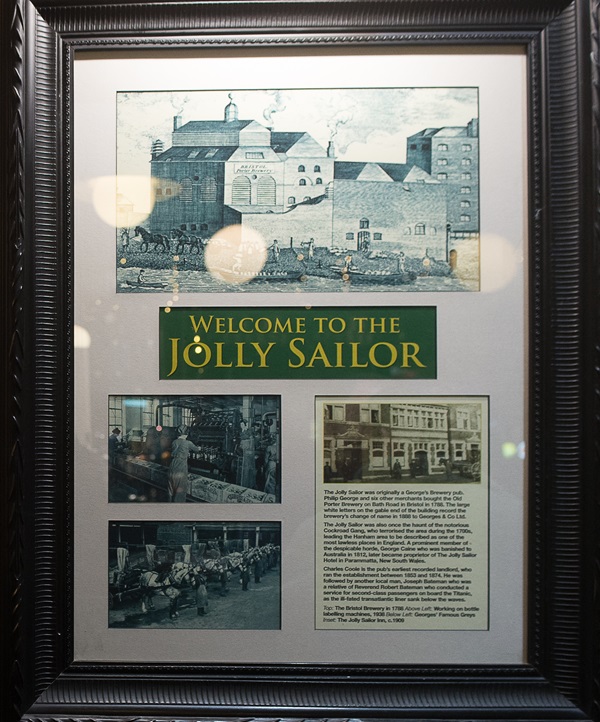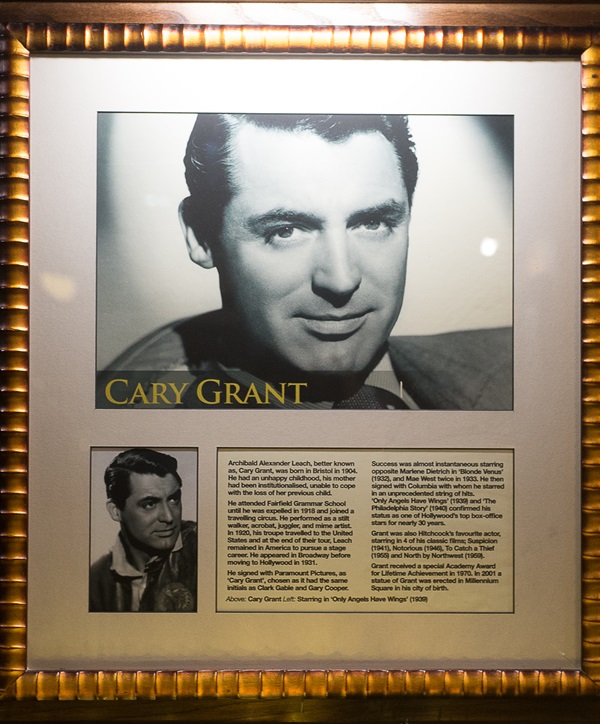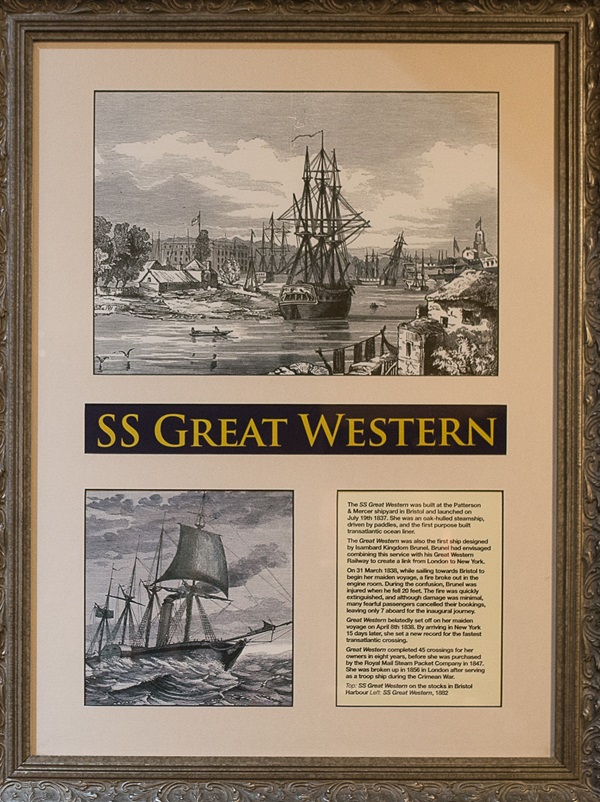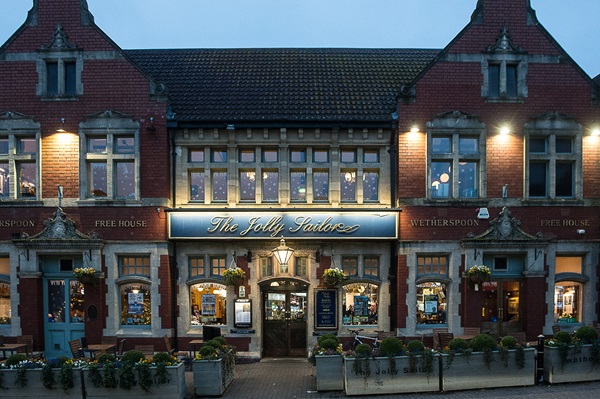This pub is closed permanently. Your nearest Wetherspoon pub: The Kingswood ColliersThe Kingswood Colliers Bristol
This long-standing pub is situated on the main road through Hanham. It follows the line of a Roman road to Bath (Aqua Sulis) which was built in the first century. Its name is a link with the nearby River Avon. Its earliest recorded landlord is Charles Coole, in charge during 1853–74. He was followed by Joseph Bateman, whose relative conducted a service on board the Titanic as she sank below the waves.
An illustration, photographs and text about The Jolly Sailor.

The text reads: The Jolly Sailor was originally a George’s Brewery pub. Philip George and six other merchants bought the Old Porter Brewery on Bath Road in Bristol in 1788. The large white letters on the gable end of the building record the brewery’s change of name in 1888 to Georges & Go Ltd.
The Jolly Sailor was also once the haunt of the notorious Cockroad Gang, who terrorised the area during the 1700s, leading the Hanham area to be described as one of the most lawless places in England. A prominent member of the despicable horde, George Caine who was banished to Australia in 1812, later became proprietor of The Jolly Sailor Hotel in Parammatta, New South Wales.
Charles Coole is the pub’s earliest recorded landlord, who ran the establishment between 1853 and 1874. He was followed by another local man, Joseph Bateman who was a relative of Reverend Robert Bateman who conducted a service for second-class passengers on board the Titanic, as the ill-fated transatlantic liner sank below the waves.
Top: The Bristol Brewery in 1788
Above left: Working on bottle labelling machines, 1938
Below Left: Georges’ Famous Greys
Inset: The Jolly Sailor Inn, c1909.
An illustration, photograph and text about Kate Bishop.

The text reads: Kate Bishop was born in Bristol in 1848. As part of a theatrical family she began acting from a young age. Both her brother Alfred and daughter Marie also forged successful careers on the stage.
Bishop appeared on the West End in A Loving Cup at the Royalty Theatre in 1869. This was followed by a run of three WS Gilbert plays from 1871 at the Royal Court Theatre. The last of which, where she played Jessie Blake in On Guard, earned her great critical acclaim. However, undoubtedly her most famous role was as Violet Melrose in HJ Byron’s Our Boys. A part she first played in January 1875 and performed almost continuously through its historic run of four years and four months. When the play finally ended, she took another leading role in Byron’s next production, The Girls.
Bishop retired from the theatre in the late nineteenth century and moved to Australia where she started a family. She spent the next fifteen years in the antipodes before returning in 1900 to resume her career. Her last stage appearance was in 1915, as Lady Matilda Rye in HA Vachell’s The Case of Lady Camber at the Savoy Theatre.
Top: Violet Melrose in HJ Byron’s Our Boys
Left: Kate Bishop.
Photographs and text about Cary Grant.

The text reads: Archibald Alexander Leach, better known as, Cary Grant, was born in Bristol in 1904. He had an unhappy childhood, his mother had been institutionalised, unable to cope with the loss of her previous child.
He attended Fairfield Grammar School until he was expelled in 1918 and joined a travelling circus. He performed as a stilt walker, acrobat, juggler, and mime artist. In 1920, his troupe travelled to the United States and at the end of their tour, Leach remained in America to purse a stage career. He appeared in Broadway before moving to Hollywood in 1931.
He signed with Paramount Pictures, as Cary Grant, chosen as it had the same initials as Clark Gable and Gary Cooper.
Success was almost instantaneous starring opposite Marlene Dietrich in Blonde Venus (1932), and Mae West twice in 1933. He then signed with Columbia with whom he starred in an unprecedented string of hits.
Only Angels Have Wings (1939) and The Philadelphia Story (1940) confirmed his status as one of Hollywood’s top box-office stars for nearly 30 years.
Grant was also Hitchcock’s favourite actor, starring in 4 of his classic films; Suspicion (1941), Notorious (1946), To Catch a Thief (1955) and North by Northwest (1959).
Grant received a special Academy Award for Lifetime Achievement in 1970. In 2001 a statue of Grant was erected in Millennium Square in his city of birth.
Above: Cary Grant
Left: Starring in Only Angels Have Wings (1939)
Illustrations and text about SS Great Western.

The text reads: The SS Great Western was built at the Patterson & Mercer shipyard in Bristol and launched on July 19 1837. She was an oak-hulled steamship, driven by paddles, and the first purpose built transatlantic ocean liner.
The Great Western was also the first ship designed by Isambard Kingdom Brunel. Brunel had envisaged combining this service with his Great Western Railway to create a link from London to New York.
On 31 March 1838, while sailing towards Bristol to begin her maiden voyage, a fire broke out in the engine room. During the confusion, Brunel was injured when he fell 20 feet. The fire was quickly extinguished, and although damage was minimal, many fearful passengers cancelled their bookings, leaving only 7 aboard for the inaugural journey.
Great Western belatedly set off on her maiden voyage on April 8 1838. By arriving in New York 15 days later, she set a new record for the fastest transatlantic crossing.
Great Western completed 45 crossings for her owners in eight years, before she was purchased by the Royal Mail Steam Packet Company in 1847. She was broken up in 1856 in London after serving as a troop ship during the Crimean War.
Top: SS Great Western on the stocks in Bristol Harbour
Left: SS Great Western, 1882
An illustration and text about Clifton Suspension Bridge.

The text reads: The Clifton Suspension Bridge, designed by Isambard Kingdom Brunel.
Brunel died in 1859, without seeing the completion of the bridge. Brunel’s colleagues in the Institution of Civil Engineers felt that completion of the Bridge would be a fitting memorial, and started to raise new funds.
Above: Clifton Suspension Bridge completed in 1864.
An illustration of Long Tunnel – Fox’s Wood (from the west).

External photograph of the building – main entrance.

If you have information on the history of this pub, then we’d like you to share it with us. Please e-mail all information to: pubhistories@jdwetherspoon.co.uk